Everything you Need to Know AboutFish Feed Processing Machine
Introduction to Fish Feed Processing Machine
Fish feed processing machines play a pivotal role in the aquaculture industry by facilitating the production of high-quality feed for fish farming. These machines are sophisticated equipment designed to process raw ingredients into nutritious and palatable pellets suitable for various fish species.
The evolution of fish feed processing machines has been marked by continuous innovation and technological advancements. Initially, manual methods were employed for feed production, involving simple tools like mortars and pestles. However, with the growing demand for fish feed and the expansion of aquaculture operations, the need for efficient and scalable processing solutions became evident. This led to the development of mechanical feed processing equipment, such as grinding mills and mixers, which significantly increased production capacity and quality.
Over time, advancements in automation, computerization, and precision engineering have further revolutionized the fish feed processing industry, enabling manufacturers to produce customized feeds tailored to specific nutritional requirements and fish species. Today, modern fish feed processing machines incorporate cutting-edge technologies such as extrusion, which enhances feed digestibility, palatability, and nutrient absorption, thereby optimizing fish growth and health.
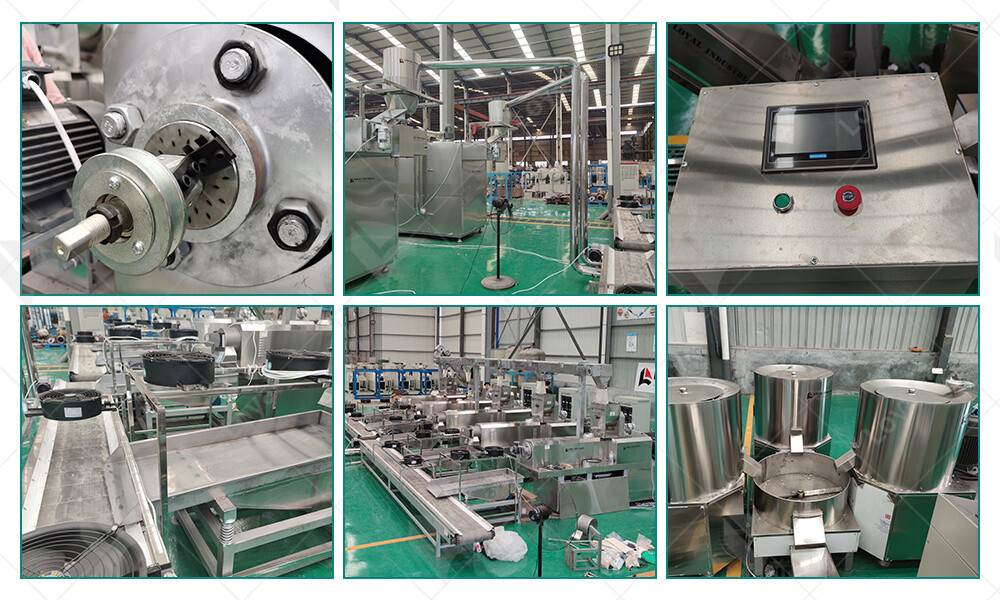
Evolution of Fish Feed Processing Technology
The evolution of fish feed processing technology has been driven by the growing demand for efficient and sustainable aquafeed production. Historically, fish feed processing was a labor-intensive and time-consuming process, often relying on manual methods such as hand mixing and grinding. However, as the aquaculture industry expanded and diversified, there arose a need for more sophisticated and automated processing solutions to meet the increasing demand for high-quality fish feed.
Early advancements in fish feed processing technology focused on mechanizing certain aspects of the production process, such as grinding and mixing, to improve efficiency and consistency. Mechanical grinders and mixers replaced manual labor, allowing for faster and more uniform processing of raw ingredients. However, these early machines were limited in their capabilities and often produced feeds of variable quality.
The most significant leap forward in fish feed processing technology came with the introduction of extrusion technology. Extruders revolutionized the industry by offering a versatile and highly efficient method for producing fish feed pellets. Extrusion involves the mechanical shearing and heating of feed ingredients under high pressure, resulting in the formation of uniform pellets with enhanced digestibility and nutrient retention. This process not only improved the quality of the feed but also allowed for greater flexibility in ingredient selection and formulation.
In recent years, advancements in automation, control systems, and data analytics have further refined fish feed processing technology. Automated systems can now precisely control the extrusion process, ensuring optimal feed quality and consistency batch after batch. Additionally, advancements in digital monitoring and control systems have enabled manufacturers to optimize production efficiency, minimize waste, and reduce environmental impact.

Components of Fish Feed Processing Machine:
Fish feed processing machines consist of several key components that work together to efficiently produce high-quality feed pellets. These components include:
1. Raw Material Handling System: This system comprises equipment for receiving, storing, and handling raw ingredients such as fish meal, soybean meal, grains, vitamins, and minerals. It often includes silos, conveyors, and weighing systems to ensure accurate ingredient measurement and batching.
2. Grinding and Mixing Equipment: These machines are responsible for grinding raw ingredients into fine particles and mixing them to create a uniform feed blend. Hammer mills, mixers, and grinders are commonly used in this process to achieve the desired particle size distribution and ingredient homogeneity.
3. Extrusion or Pelleting Machine: This is the core component of the fish feed processing line, where the blended feed mixture is compressed and shaped into pellets or extruded feeds. Extruders utilize high pressure and temperature to cook the feed mixture, improving its digestibility and nutrient bioavailability. Pelletizers then shape the cooked mixture into uniform pellets of specified sizes.
4. Drying and Cooling System: After extrusion or pelleting, the feed pellets undergo a drying and cooling process to reduce moisture content and stabilize their physical properties. Dryers and coolers remove excess moisture and heat from the pellets, ensuring long-term storage stability and preventing spoilage.
5.Packaging and Bagging Equipment: Once the feed pellets are dried and cooled, they are packaged into bags or containers for storage, transportation, and distribution. Packaging equipment such as bagging machines, weighing scales, and sealers are used to package the feed pellets efficiently and securely, ready for market distribution.

Extrusion Process in Fish Feed Production
Extrusion involves the mechanical shearing and cooking of raw materials under high temperature and pressure. This process is achieved through the combination of a screw feeder, barrel, and die. As the raw materials pass through the barrel, they are subjected to intense heat and pressure, causing them to undergo physical and chemical transformations.
Extrusion cooking facilitates the gelatinization of starches, denaturation of proteins, and disruption of cell walls in plant-based ingredients, improving their digestibility for fish. Moreover, the high temperature achieved during extrusion effectively kills harmful microorganisms and pathogens, ensuring the safety of the fish feed.
The Fish Feed Processing Machine controls various parameters such as temperature, moisture content, and pressure to achieve optimal extrusion conditions. By adjusting these parameters, manufacturers can customize the nutritional composition, texture, and palatability of the fish feed pellets to meet the specific requirements of different fish species and growth stages.
The extrusion process also enables the incorporation of additives such as vitamins, minerals, and fish oils, enhancing the overall nutritional profile of the feed. Additionally, the uniform shape and size of extruded pellets facilitate efficient feeding practices and minimize wastage in aquaculture operations.
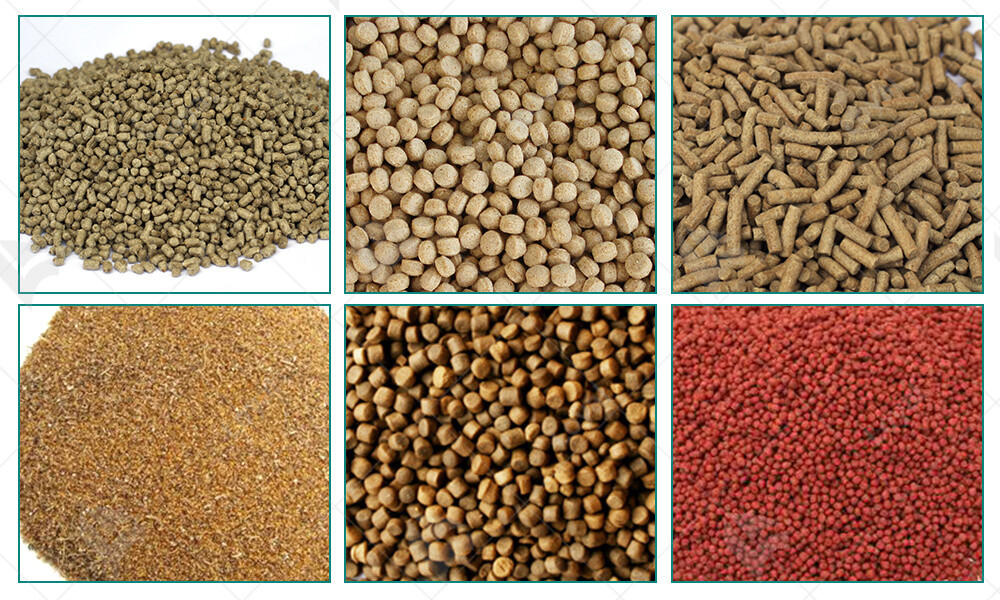
Grinding and Mixing in Fish Feed Processing
Grinding involves reducing the particle size of raw ingredients such as grains, oilseeds, and protein sources to enhance their digestibility and nutrient availability for fish. The grinding process is performed using hammer mills or pulverizers, which pulverize the ingredients into smaller particles while maintaining their nutritional integrity.
Mixing is the process of blending various ingredients in the correct proportions to achieve a homogeneous feed mixture. Fish feed processing machines employ horizontal or vertical mixers equipped with rotating blades or paddles to ensure thorough mixing of dry and liquid ingredients. Proper mixing prevents ingredient segregation and ensures uniform distribution of nutrients throughout the feed.
The quality of grinding and mixing directly impacts the nutritional value, palatability, and digestibility of the fish feed. Inadequate grinding can lead to poor pellet quality, uneven nutrient distribution, and reduced feed intake by fish. Similarly, improper mixing can result in nutrient imbalances, leading to nutritional deficiencies or excesses in the feed.
Fish feed manufacturers utilize advanced grinding and mixing equipment integrated into Fish Feed Processing Machines to optimize feed quality and production efficiency. Automated control systems regulate grinding fineness, mixing time, and ingredient ratios, ensuring consistent feed quality batch after batch.
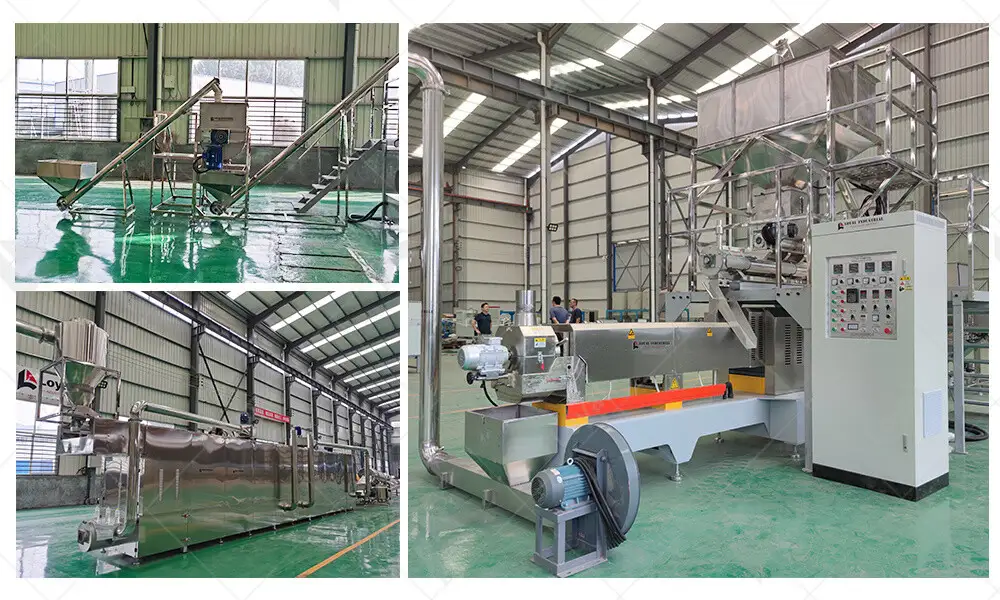
Importance of Pelletization in Fish Feed
Pelletization enhances the nutritional value and digestibility of fish feed by improving ingredient homogeneity and reducing feed wastage. The compact nature of pellets minimizes feed dustiness and prevents nutrient segregation during handling and transportation, ensuring that fish receive a balanced diet with every feeding.
Moreover, pelletized feed exhibits improved water stability, retaining its integrity and nutrient content when submerged in water. This is particularly beneficial in aquaculture systems where feed is directly dispensed into fish tanks or ponds, minimizing nutrient leaching and environmental pollution.
Pelletization also facilitates precise feed management and portion control, allowing fish farmers to accurately monitor feed intake and adjust feeding regimes according to the nutritional requirements of the fish. Additionally, the uniform size and shape of pellets promote efficient feeding behavior among fish, reducing competition and cannibalism in crowded aquaculture environments.
Fish feed processing machines utilize specialized pelletizing dies and rollers to produce pellets of consistent size and shape. Advanced control systems regulate pellet density, hardness, and moisture content, ensuring optimal pellet quality and performance in different aquaculture settings.

Comparison of Fish Feed Processing Machine Manufacturers
When comparing Fish Feed Processing Machines from LOYAL and American Extrusion, several factors come into play, determining their suitability for various applications in the aquafeed industry. Let's examine these factors in a concise table format:
Aspect | LOYAL Company | American Extrusion Company |
Technology | Utilizes advanced extrusion technology | Employs state-of-the-art processing methods |
Product Range | Offers a diverse range of machine models | Specializes in customized solutions |
Efficiency | High efficiency in production throughput | Known for precision and consistency |
Durability | Robust construction for long-term use | Emphasizes durability and reliability |
Automation | Automated features for streamlined operation | Focuses on user-friendly interfaces |
Maintenance | Simple maintenance procedures | Offers comprehensive maintenance packages |
Support and Service | Responsive customer support | Dedicated service teams for assistance |
Cost-effectiveness | Competitive pricing with value-added features | Premium pricing for quality assurance |
Innovation | Continuous innovation in technology | Adaptive to market trends and innovations |
In summary, while LOYAL Company excels in technological advancement and efficiency, American Extrusion Company stands out for its customization options and reliability. Ultimately, the choice between the two depends on specific requirements, budget considerations, and production priorities.
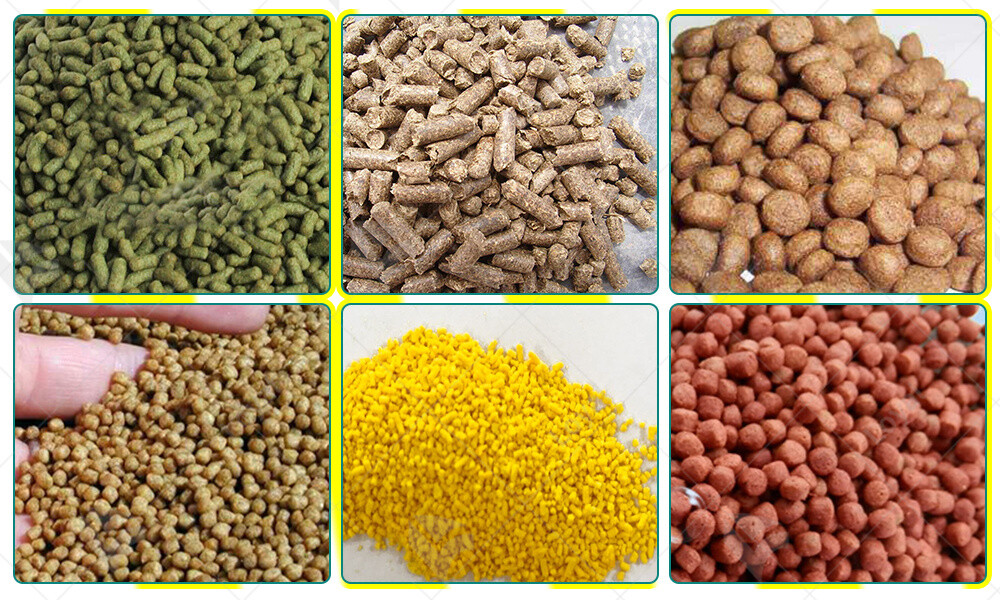
Innovations in Fish Feed Processing Technology
In recent years, there have been significant innovations in Fish Feed Processing Technology aimed at enhancing efficiency, improving product quality, and reducing environmental impact.
One notable innovation is the integration of artificial intelligence (AI) and machine learning algorithms into processing machines. These technologies enable real-time monitoring and adjustment of production parameters, optimizing feed quality and minimizing waste.
Advancements in extrusion technology have led to the development of high-capacity machines capable of producing a wide range of feed formulations efficiently. Improved die designs and temperature control systems ensure precise shaping and cooking of feed pellets, resulting in uniform size and texture.
Another area of innovation is the incorporation of sustainable practices into processing operations. Manufacturers are increasingly adopting energy-efficient equipment and exploring alternative ingredients derived from sustainable sources to reduce reliance on traditional fishmeal and soybean-based feeds.
Automation and robotics play a crucial role in streamlining production processes and reducing labor costs. Automated systems for ingredient handling, mixing, and packaging enhance efficiency and consistency while minimizing human error.

Market Trends and Demand for Fish Feed Machines
The market for fish feed machines is witnessing significant growth due to the increasing demand for high-quality fish feed worldwide. One of the key drivers behind this trend is the rising consumption of fish and seafood products, driven by population growth and changing dietary habits. As more consumers recognize the health benefits of fish consumption, there is a corresponding need for efficient and advanced machinery to produce nutritious fish feed.
Another factor fueling the demand for fish feed machines is the expansion of aquaculture operations globally. Aquaculture has emerged as a vital source of fish production to meet the growing demand, surpassing wild-caught fish in recent years. This expansion necessitates the adoption of modern technologies and equipment for fish feed processing to enhance production efficiency and meet quality standards.
Moreover, the increasing focus on sustainable aquaculture practices is driving the adoption of specialized fish feed machines. These machines are designed to minimize waste, optimize feed conversion ratios, and reduce environmental impact. As sustainability becomes a priority for both producers and consumers, the demand for eco-friendly fish feed processing equipment is expected to rise.
In addition to traditional aquaculture, the growing popularity of ornamental fishkeeping is also contributing to the demand for fish feed machines. With more enthusiasts entering the hobby, there is a need for specialized feed formulations and processing equipment tailored to the nutritional requirements of ornamental fish species. This niche segment presents opportunities for manufacturers to diversify their product offerings and cater to a unique market segment.
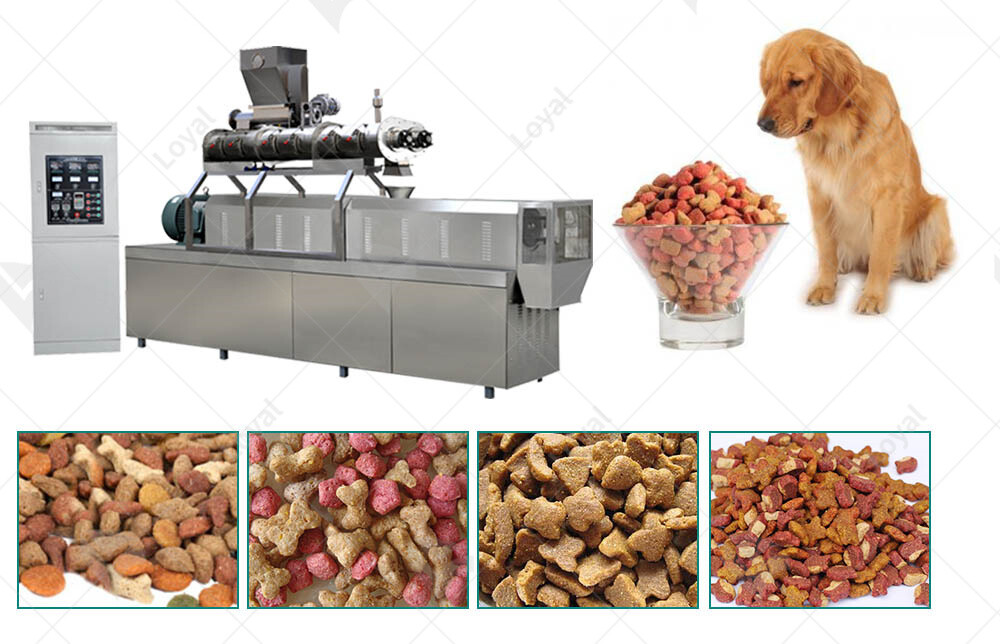
Future Prospects of Fish Feed Processing Machine Industry
The future of the fish feed processing machine industry is promising, with several key trends shaping its trajectory. One of the most significant trends is the continued emphasis on sustainability and environmental stewardship. As concerns about overfishing and habitat degradation mount, there is growing pressure on aquaculture operations to adopt eco-friendly practices. In response, manufacturers are developing innovative feed processing machines that minimize waste, reduce energy consumption, and utilize sustainable ingredients.
Another important trend is the integration of digital technologies and automation in fish feed production. Automation enhances efficiency, reduces labor costs, and improves product consistency. With the advent of Internet of Things (IoT) technology, feed processing machines can be connected to centralized control systems, enabling real-time monitoring and optimization of production processes. This trend towards Industry 4.0 principles is expected to revolutionize the fish feed processing industry, making operations more streamlined and data-driven.
There is growing interest in alternative ingredients for fish feed formulations, driven by concerns about the sustainability of traditional feed sources such as fishmeal and fish oil. Manufacturers are exploring novel sources of protein and fat, including plant-based proteins, insects, and single-cell proteins, to reduce reliance on finite marine resources. Fish feed processing machines will need to adapt to accommodate these alternative ingredients, requiring modifications in processing parameters and equipment design.
Market globalization and the rise of aquaculture in emerging economies are expanding the geographical scope of the fish feed processing machine industry. As aquaculture production grows in regions such as Asia-Pacific and Latin America, there will be increased demand for locally manufactured feed processing equipment tailored to regional preferences and production practices.
In conclusion, the fish feed processing machine industry is poised for continued growth and innovation. By embracing sustainability, leveraging digital technologies, and adapting to changing market dynamics, manufacturers can capitalize on emerging opportunities and contribute to the sustainable development of the aquaculture sector.
References
1.Wenger Manufacturing: https://www.wenger.com
2.Clextral: https://www.clextral.com
3.Bühler Group: https://www.buhlergroup.com
4. Baker Perkins: https://www.bakerperkins.com
5.Andritz Group: https://www.andritz.com













